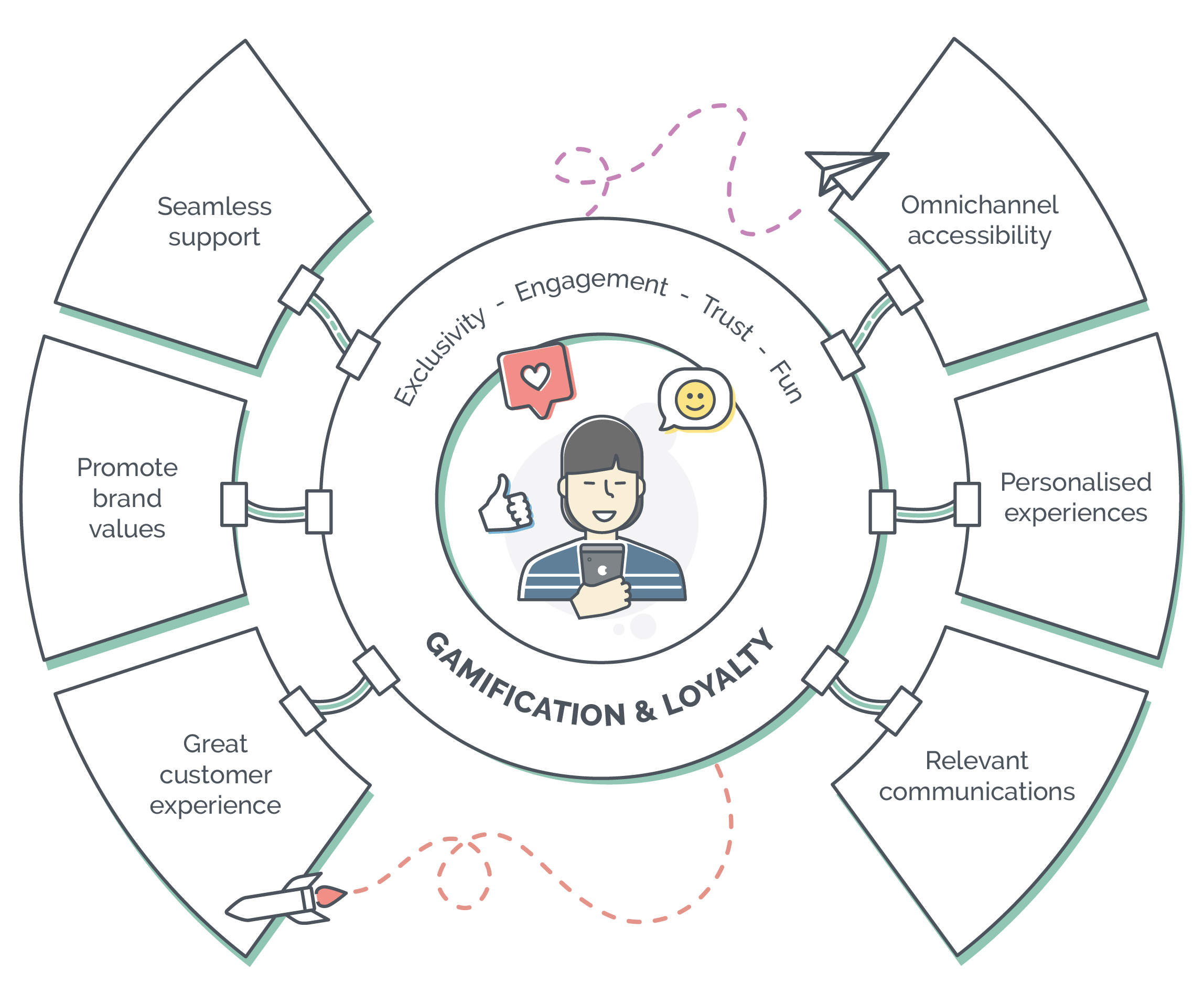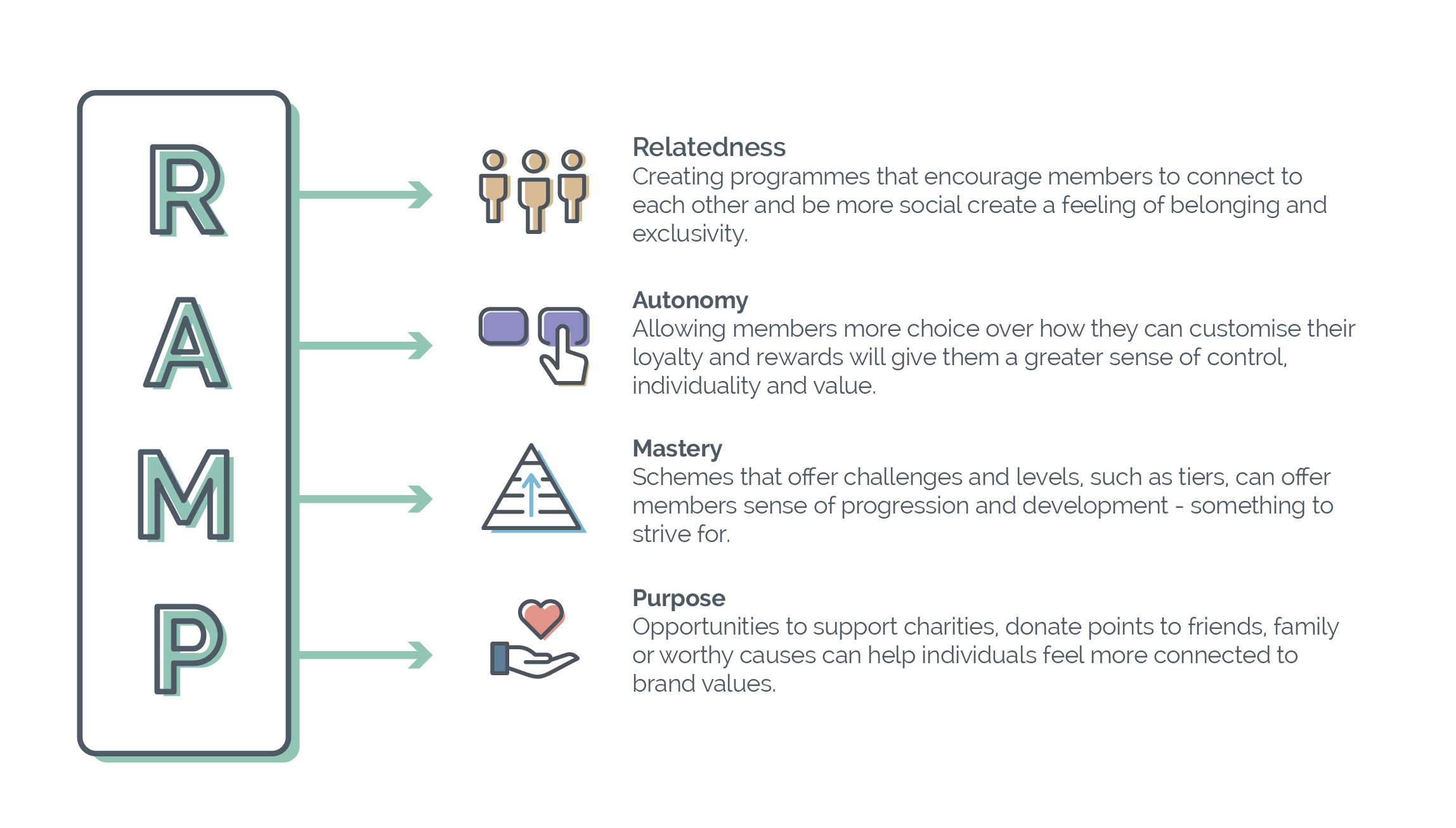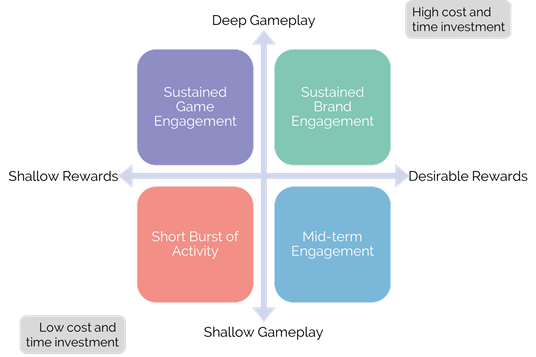Brands are constantly fighting for consumer attention, relevance and profitability against a backdrop of intense disruption and competition. It would be superficial to claim consumer’s today are easily influenced or swayed, when the reality is that most are looking to be impressed by seamless accessibility and browsing, won over by considered brand values and communications, and excited by excellent customer service and stand-out experiences. Capturing their attention is a crucial part of the journey, but strong Customer Engagement strategies should also be sustaining engagement, retention, and advocacy to truly reinforce profitability and performance.
Successful loyalty programs develop Customer Engagement beyond transactional relationships which are incentive focused but weak on lasting engagement. This is often due to the overall offering lacking personalisation, relevance, or user centricity. Customer Engagement strategies that do well in hooking and retaining their audiences provide a richer, multi-faceted offering that directly appeals to user needs and drives.

To deliver this, you of course need a strong technological foundation to support seamless, omnichannel accessibility. You need an attractive product or service offering, well showcased through intuitive and creative design work. You need an insightful understanding of the end user or customer, in order to provide communications and touchpoints that build trust. But how can you enhance the experience, in a way that still authentically represents your brand, to help the customer fall just that bit more in love?
63% of loyalty members say that if they enjoy an experience, they will use it more. Great Customer Service: 75% of loyalty members say they would stop using a program if they experience poor service. Brand Values: 70% of consumers feel it is important that brands uphold values that they have an emotional attachment to.
A strategy that can make a big difference to sustainable user enjoyment and effectively transmit information is Gamification: the application of game design, game elements and play in non-game contexts – such as brand apps or member schemes.
Why Add Gamification?
At first glance, Gamification could be easily sorted into the camp of shallow gimmicks. Is the idea not to move beyond just incentivising? However, as with AI or VR or any innovative functionality you’re looking to design into a process or experience, the result is highly dependent on the ‘why’, the ‘what’ and the ‘how’. So let’s break it down.
Fun and enjoyment seem such obvious elements to include in your offering to customers, and yet so often aren’t designed into experiences. If you want customers to love your brand, if you want to be the first place they look, if you want to bolster recurring purchases, you need to seriously think about how to find ways to make them enjoy the relationship more.
Games, by nature, are fun. Everyone will have types they prefer more than others, and some that they really dislike, because games create emotional and behavioural responses within us. Who hasn’t seen their competitive side suddenly awakened by a game? Or maybe you love building or exploring new worlds? Gamification is often misconstrued as ‘just adding a game’ to something. The theory is actually about applying game elements or game-like design into non-traditional settings in order to make them more enjoyable, or to create more of an emotional reaction from participants. We have all seen how games can create buzz, but gamification can also make a program more attractive or even teach critical messages in a fun and engaging way (learn through play).
Techvalidate showed that 30% of companies using gamification improved registration conversion rates by upward of 50%. Tapping into people’s need for enjoyment, or even curiosity to see what the fuss is all about, is a really easy starting place for applying gamification to a loyalty or membership scheme. For example, attractive but short games can be hosted seasonally to encourage exploration of new collections or messages, as fun, exclusive, personalised experiences that exemplify the brand values and bring the customer just that bit closer.
Keep Them Coming Back For More
Of course, many loyalty programmes already use a very simplistic gamification strategy to encourage interactions: points and rewards. Rewards schedules are essential to any loyalty scheme but consumers today expect more from their customer experience than “spend more to get more” point systems. Plus, through these purely transactional approaches, you’re not actually rewarding loyalty, you’re rewarding spending. Some customers will desperately want to be part of a brand’s circle because they’re inspired by the brand values or imagery but may not always have the cash to splash frequently enough to be rewarded. Loyalty schemes can immediately become more personal by remembering and recognising special occasions, such as a customer’s birthday or membership anniversary. Game design can then also help members understand what behaviours can be rewarded or give them the chance to boost points or bring themselves closer to new membership levels or treats.
Random rewards, like Easter Eggs, can also add elements of surprise and delight and give customers a reason to log into their account to see if they’re in luck that day. Random promotions, offers and communications that speak to them can help energise the connection between customer and brand.
Gamification can also be applied to boost social connection within a programme, allowing and encouraging and rewarding people for inviting friends to join. Programmes that allow you to create teams or groups can have two benefits – while it obviously helps to bring new members into the scheme, more importantly for the customer it creates a bond and shared experience with friends. Just like games are always more fun when playing with a group of friends, either playing against each other or competing together for a prize helps foster natural and enjoyable ways to improve interactivity within a loyalty scheme.
Creating Emotional Reactions to Drive Behaviour Change – RAMP

Appealing to Your Audience
More ways to boost the social element within a program, that have become increasingly popular – providing seamless connections and pathways to social media platforms. Encouraging customers to share their shopping experiences with their networks and actually rewarding and recognizing their Instagram posts, Tweets or Facebook reviews/recommendations, is a fast way to nurturing brand advocates or at least a much more meaningful connection between customer and brand. Furthermore, people are always more inclined to purchase when they can relate to the ambassadors they see on the brand website, apps, and of course social media. In the age of the influencer, incentivizing and enabling people to share their own positive experiences will help build communities and foster a sense of belonging and exclusivity for members whose feedback or interactions get featured.
Game elements that can enhance the sensation can be quite simple but effective, such as tiered reward systems where members unlock different experiences, offers or access, or even a more personalised approach where members can choose the membership or profile that suits their style, needs or requirements. You can even take this further by allowing customers to fully personalise their reward system, offering not only rewards related to the brand but more experiential rewards – leisure activities and the like. Again, this makes them feel they have more control of their preferences and options within the loyalty scheme, making it more tailored to them as individuals.
Ultimately, it is important to design with the user in mind. No one is interested in playing a game where they’re not able to succeed or participate fully, or that feels it is weighted against them. If you just apply a game with no meaning or relevance, you’ll risk abandonment, just like designing an app without considering how people need to use it. Considering what will drive them to brand loyalty and advocacy, or how to improve the journey to purchase, but also making sure they feel they’re in control of their membership rather than at the mercy of an elusive brand, or just another number on a platform.


